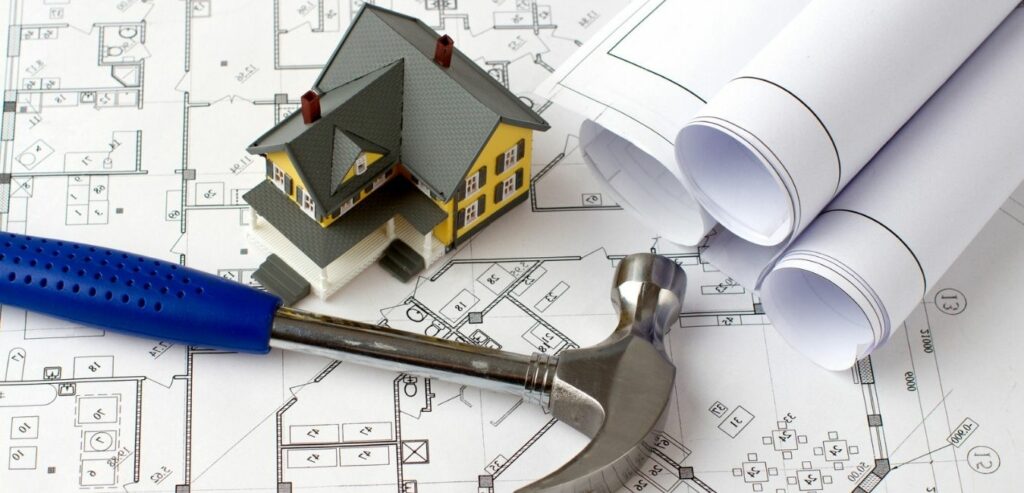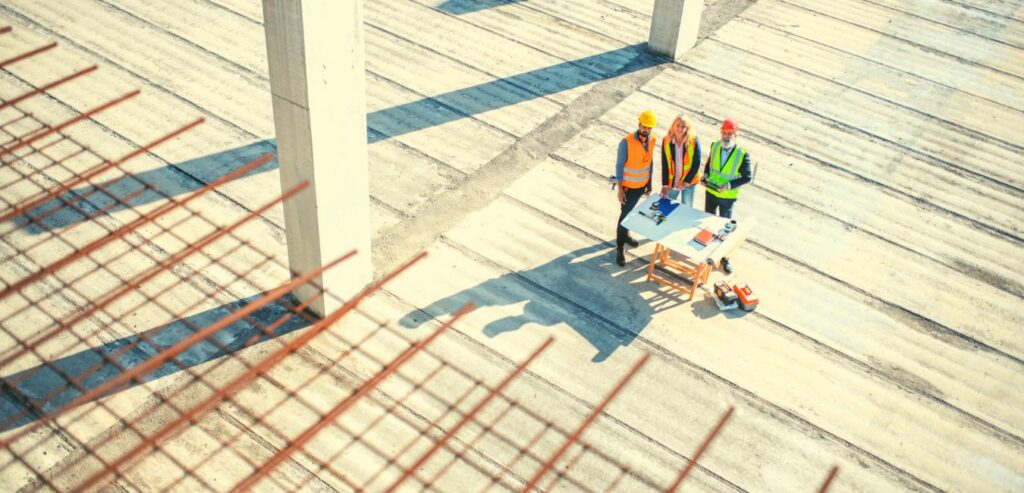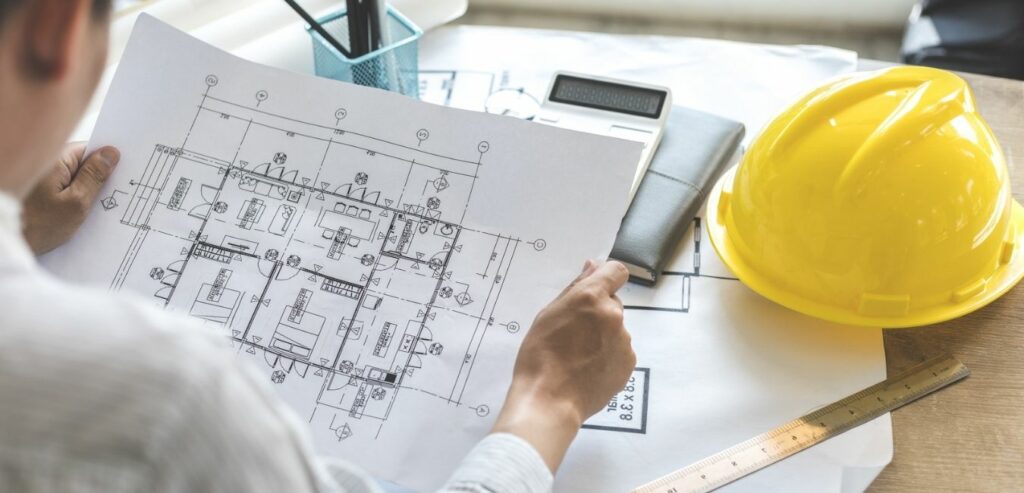Whether you are a general contractor or a skilled tradesman, knowing how to read construction plans is a vital skill. Construction plans vary in scope and complexity, and understanding how to read them well determines the efficiency of a project.
The ability to study construction plans increases your competency in the construction industry. This article will cover everything you need to know concerning construction plans.
Table of Contents
What is a construction plan?
A construction plan refers to documents that define the requirements of construction projects. Some of these documents are the budget, scheduling, and resources.
Modern construction projects vary significantly in size and complexity, but all construction plans contain the same elements. All buildings, regardless of how complex they are, construction plans have structural, electrical, and mechanical systems and finishes.
Construction plans are different from specifications, as project specifications include information on materials, installation techniques, and quality standards.
Proper construction planning increases the chances of success of a project, and the more detailed your construction plan is, the smaller the possibility for issues to arise in your project. General contractors, tradespeople, and subcontractors need a deep understanding of construction plans to ensure project success.
The different types of construction plans
Different construction plans are issued depending on the details and complexity of a project to ensure a smooth construction project transition. Some construction plans are site plans, floor plans, cross-sections, and elevations.
- Site plan: This is the detailed drawing of the project showing the property boundary lines and means of access to the site.
- Floor plan: The floor plan shows the arrangement of spaces in a building. It shows rooms, walls, windows, doors, furniture, and fittings.
- Cross-sections and elevations: The cross-sections depict a building if cut through the vertical plane. It shows details on the dimensions and thickness components of a building. On the other hand, elevations are projections showing one side of the project.
Construction plans also vary depending on the stakeholders involved. These are the client, the contractor, and the municipalities. A construction plan maps out the entire project from inception to completion.
The construction plan issued by the contractor majorly focuses on project implementation.
The construction plan issued by the municipality puts the project in context with the surrounding area and considers the construction rules and regulations governing the city.
Who is involved in creating a construction plan?
The project manager is the one responsible for making the construction plan. However, he doesn't do it alone. Stakeholders also need to be involved for the planners to manage their expectations, and construction crews need to give insights into their skills from past jobs.
The architect must plan and coordinate the planning and design phase of the project while the contractor coordinates the work done on-site and health and safety measures per the construction plans.
Cost estimators also help with the planning process of procuring materials.

How to create a construction plan
Creating a construction plan requires using proper steps, accurate information, and formatting techniques. It might take years and multiple projects to expose you to all the necessary information for making a construction plan. However, all construction plans primarily follow the steps listed below.
1. Understand what the project is
The first part of any construction plan is familiarizing yourself with the project. You need to understand the purposes and objectives of the project, the stakeholders involved, and the execution plan. You also need to evaluate existing site photos, weather patterns, ongoing projects in the area, and existing services.
After familiarizing yourself with the project, you need to prepare a construction plan outline. The outline addresses the various sections you need to address in your projects, such as logistics, scheduling, and project administration.
2. ROI
Regardless of the type of construction project, determining the Return on Investment (ROI) helps the construction project stakeholders make informed decisions that enhance productivity and prioritize efficiency in a project. The ROI is a financial planning measure that determines a project's value and predicts the project's future performance.
Most clients need to secure funding for construction projects from external financiers. The project's ROI proves valuable to decision-making as it helps them review upcoming costs and make necessary adjustments to give financial reports that best benefit stakeholders. For instance, if the anticipated costs reveal a negative ROI, the project team can adjust costs to minimize the negative costs and boost the possibility of approval from company decision-makers.
The ROI also uncovers unforeseen company benefits, making it easier for financiers to approve your project. For contractors working on several projects, having an ROI helps them know which one to prioritize first, allowing them to improve time management.
The ROI also helps you analyze a project's performance, learn from its successes and failures, and help you in the cost estimation of future projects.
3. Required activities
The next part is for the project team to make the roadmap for the project activities of all the people involved. Here the project team determines the project's scope, the work breakdown structure, and the communication plan.
The project's scope outlines the project's objectives, key milestones, and deliverables. The work breakdown structure divides the project scope into small, manageable chunks, whereas the communication plan outlines a common framework for communication to avert conflict.
The planning of the required activities in a project needs to be transparent for all stakeholders to understand and conceptualize the activities necessary during the project's lifecycle. The list of activities captures the resources required to perform the activities, the costs, deadlines, subtasks, and dependent tasks.
The activity planning phase also details a risk management plan that identifies risks beforehand, such as time and costs, necessary budget cuts, and shortage of resources.
4. Determine budget
Construction projects cannot move without financing. To accurately forecast project costs, you need to perform project research and analysis where you review similar projects and get insights from suppliers to help you understand how much your project would cost. You need to set realistic expectations on your design options and resources.
After research, you need to create a requirement list with materials necessary for the project and cost estimation. Some costs include property costs, professional fees and services, materials, labor, equipment, project management, contingencies, utilities and taxes, and insurances and bonds.
Having a project schedule before computing the project budget helps reduce inaccuracies in cost estimation. Not taking time to make a proper budget will slow down your project. Do not solely look at the cheapest bottom line costs when estimating costs. These might initially please stakeholders, but they will compromise the project's integrity if they lead to low-quality work.
5. Create schedule
Accurate scheduling is essential for any project, as they save a lot of time and money on a project. You need a scheduling tool to help you be accurate and efficient in your scheduling for precise scheduling. Software tools automate tasks making it easy to organize and visualize projects.
When compiling the schedule, you need to research everything concerning your project. Talk to project inspectors to learn the building permits necessary for you to commence your project. It will also be best to consult your budget to understand the time-sensitive expenditures in your project and ensure they don't delay your project.
Factor in the subcontractors and determine how long they will take to complete tasks, list the necessary tasks, and determine the duration of each task. Highlight the key milestones you need to achieve along the way. You then need to create a comprehensive work breakdown structure that breaks down work into small manageable bits and shows if there are conflicts to manage.

6. Assemble team
Now that you have your construction plan, you need individuals that help you implement the plan. This comprises the client, general contractor, architect, cost estimator, engineers, and other 2nd tier suppliers. It is best to create a great team that makes collaborative work more effortless.
Consider whether all the team members have the necessary certification and whether they follow appropriate operational and safety procedures. It is also best to evaluate the past performance of team members. Nothing speaks more of a team's performance than their accomplished work.
It would be best to consider how team members will communicate and interact with each other. Poor communication channels are an easy source of conflicts and delays in a project. After assembling the construction team, the final step is reviewing the construction plan.
7. Review plan
The construction plan review ensures the project meets all stakeholder expectations and covers all conditions that might need approval in a project. The project team checks the budget, development standards, project timelines, administrative review processes, and information checklists during the review process.
The project team also reviews plans, specifications, and necessary municipal and federal licenses to kickstart the project. After checking all these items, the project is likely to succeed and is ready for commencement.
Software/documents needed to make the plan
Software like Project Manger are useful and effecient in making construction plans. The following are documents that make the construction plan.
Project Plan
This compiles all the project documents that are written in the planning phase of the construction project.
Project Charter
Gives clients a quick overview of the project plan, showing the summary, mission, and vision, and some objectives.
Business case
Shows value to the stakeholders of the project. Also created for pre-project purposes and analysis.
Communication plan
Plan out the whole channel of the project communication, the reporting protocol and central area to get guidelines.
Risk register
The risk management plan, strategies, and guidelines are included in this. A risk management software secures the project with timely alerts.
Scope Management
This defines the project activities that will be executed to complete the project. The project scope management plan is a document that will guide the construction plan.
Project Budget
All costs are highlighted with calculations on estimates correctly written. Formulae that show inflation possibilities are also accounted for in the project budget.
Project Status report
A general reporting methodology is used to show the status and progress of a construction project. This document can be automated where details are keyed in and a chart can be printed out. The health of the project can be seen from this.
Project closure template
This document shows the progress of the project upto the end and wraps up the project. It highlights the lessons learned, the project against its deliverables, and materiel use.
Project proposal template
This document is essential in convincing stakeholders on the project, and whether the project is feasible before the construction begins.
Project brief template
This summarized version of the project plan shows the goals and objectives the project seeks to achieve. The document will be necessary for stakeholders in quickly understanding a construction plan.
Project overview template
Timeline, milestones, budget, the team members and their status are all indicated in a project overview template. The template gives a brief of the proposed project.
Requirement gathering template
Each projec should satisfy the necessary stakeholders. For such, this document mentions the goals and specifications that the project will have to meet so as to satisfy the expectations of the stakeholders.
Summary
The construction planning process can be lengthy, but each step you take gives you a clear vision of your project. The construction planning process needs to be collaborative to help deal with challenges.
By now, you know how to create a construction plan. A good construction plan is the first step toward ensuring project success.

